Morgan Kelly at the website of Dartmouth:
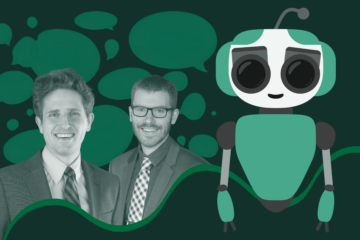 Dartmouth researchers conducted the first-ever clinical trial of a generative AI-powered therapy chatbot and found that the software resulted in significant improvements in participants’ symptoms, according to results published March 27 in NEJM AI.
Dartmouth researchers conducted the first-ever clinical trial of a generative AI-powered therapy chatbot and found that the software resulted in significant improvements in participants’ symptoms, according to results published March 27 in NEJM AI.
People in the study also reported they could trust and communicate with the system, known as Therabot, to a degree that is comparable to working with a mental health professional.
The trial consisted of 106 people from across the United States diagnosed with major depressive disorder, generalized anxiety disorder, or an eating disorder. Participants interacted with Therabot through a smartphone app by typing out responses to prompts about how they were feeling or initiating conversations when they needed to talk.
People diagnosed with depression experienced a 51% average reduction in symptoms, leading to clinically significant improvements in mood and overall well-being, the researchers report. Participants with generalized anxiety reported an average reduction in symptoms of 31%, with many shifting from moderate to mild anxiety, or from mild anxiety to below the clinical threshold for diagnosis.
More here.
Enjoying the content on 3QD? Help keep us going by donating now.

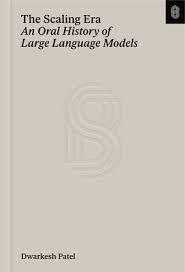 Many people don’t know how seriously to take A.I. It can be hard to know, both because the technology is so new and because hype gets in the way. It’s wise to resist the sales pitch simply because the future is unpredictable. But anti-hype, which emerges as a kind of immune response to boosterism, doesn’t necessarily clarify matters. In 1879, the Times ran a multipart front-page
Many people don’t know how seriously to take A.I. It can be hard to know, both because the technology is so new and because hype gets in the way. It’s wise to resist the sales pitch simply because the future is unpredictable. But anti-hype, which emerges as a kind of immune response to boosterism, doesn’t necessarily clarify matters. In 1879, the Times ran a multipart front-page  So Trump’s basic starting point is that he thinks trade deficits are bad.
So Trump’s basic starting point is that he thinks trade deficits are bad. 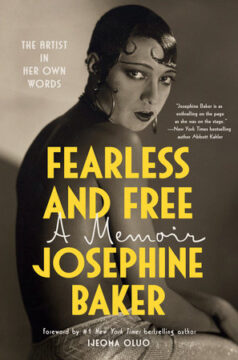 Today we think of Josephine Baker as the personification of the Jazz Age – the skinny black kid from Missouri who took Paris by storm. In retrospect, her show-stopping Revue Nègre act can be read as a subversion of the prejudices of her age. At the time, however, it just looked like a heady cocktail of comedy, exoticism and sex. Scantily garlanded with feathers, dancing to ‘barbaric, syncopated music’, Baker was ‘black poetry’, according to Marcel Sauvage, who acted as her ghostwriter.
Today we think of Josephine Baker as the personification of the Jazz Age – the skinny black kid from Missouri who took Paris by storm. In retrospect, her show-stopping Revue Nègre act can be read as a subversion of the prejudices of her age. At the time, however, it just looked like a heady cocktail of comedy, exoticism and sex. Scantily garlanded with feathers, dancing to ‘barbaric, syncopated music’, Baker was ‘black poetry’, according to Marcel Sauvage, who acted as her ghostwriter.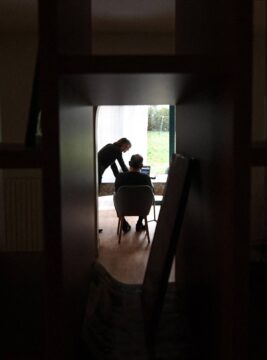 Travelers to Unimaginable Lands is that rarity: true biblio-therapy. Lucid, mature, wise, with hardly a wasted word, it not only deepens our understanding of what transpires as we care for a loved one with Alzheimer’s, it also has the potential to be powerfully therapeutic, offering the kind of support and reorientation so essential to the millions of people struggling with the long, often agonizing leave-taking of loved ones stricken with the dreaded disease. The book is based on a profound insight: the concept of “dementia blindness,” which identifies a singular problem of caring for people with dementia disorders—one that has generally escaped notice but, once understood, may make a significant difference for many caregivers.
Travelers to Unimaginable Lands is that rarity: true biblio-therapy. Lucid, mature, wise, with hardly a wasted word, it not only deepens our understanding of what transpires as we care for a loved one with Alzheimer’s, it also has the potential to be powerfully therapeutic, offering the kind of support and reorientation so essential to the millions of people struggling with the long, often agonizing leave-taking of loved ones stricken with the dreaded disease. The book is based on a profound insight: the concept of “dementia blindness,” which identifies a singular problem of caring for people with dementia disorders—one that has generally escaped notice but, once understood, may make a significant difference for many caregivers. In 2015, scientists made a surprising discovery about physiologically normal human skin: More than
In 2015, scientists made a surprising discovery about physiologically normal human skin: More than  I
I One doesn’t need a philosophy degree to recognize that the way we think about animals is, at best, deeply inconsistent. Consider the following: many Americans
One doesn’t need a philosophy degree to recognize that the way we think about animals is, at best, deeply inconsistent. Consider the following: many Americans  B
B While a drop in libido is often associated with aging in women, it’s not just a female issue. Around
While a drop in libido is often associated with aging in women, it’s not just a female issue. Around 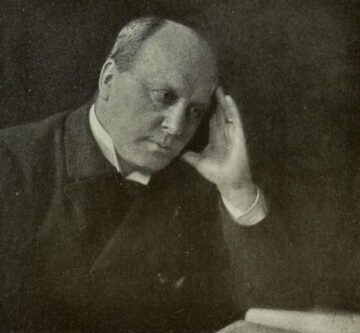 When Henry James decided to come to America in 1904 and 1905, his elder brother, William James, was not immediately pleased. William said that while his wife, Alice, would welcome his visit (she and Henry had a firm bond), he felt “more keenly a good many of the désagréments to which you inevitably will be subjected, and imagine the sort of physical loathing with which many features of our national life will inspire you.” There follows an account of how traveling Americans ate their boiled eggs, presumably in hotels and on trains, “bro’t to them, broken by a negro, two in a cup, and eaten with butter.” As a source of physical loathing, this seems a bit excessive: one might linger over William’s attempts to keep Henry’s visit at bay. William’s letter seems more to the point when he notes: “The vocalization of our countrymen is really, and not conventionally, so ignobly awful … It is simply incredibly loathsome.”
When Henry James decided to come to America in 1904 and 1905, his elder brother, William James, was not immediately pleased. William said that while his wife, Alice, would welcome his visit (she and Henry had a firm bond), he felt “more keenly a good many of the désagréments to which you inevitably will be subjected, and imagine the sort of physical loathing with which many features of our national life will inspire you.” There follows an account of how traveling Americans ate their boiled eggs, presumably in hotels and on trains, “bro’t to them, broken by a negro, two in a cup, and eaten with butter.” As a source of physical loathing, this seems a bit excessive: one might linger over William’s attempts to keep Henry’s visit at bay. William’s letter seems more to the point when he notes: “The vocalization of our countrymen is really, and not conventionally, so ignobly awful … It is simply incredibly loathsome.”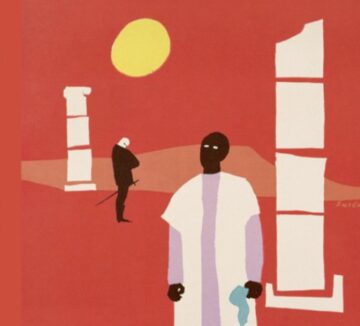 In general, we view sexual jealousy as bad. Jealousy creates distrust and destroys harmony. It does not always cause the kind of outright physical violence it does in Othello, but it certainly does violence to one’s peace of mind and to one’s sense of security and comfort. Sexual jealousy can cause an otherwise dignified individual to become a snooping, creeping, paranoid obsessive. Jealous souls, as Shakespeare writes, “are not ever jealous for the cause, / But jealous for they’re jealous. It is a monster / Begot upon itself, born on itself.” It can lead to hatred, manipulation, control, and cruelty. In Othello, it leads directly to despair and to death. And yet its absence and the void it has left behind herald something more sinister and colder than the terror and grandeur produced by the hot-blooded, violent stirring of the human heart. Instead of a thunderstorm that frightens and awes, we are left with the dreariness of a gray drizzle that chills to the bone. Sexual jealousy is the proof of sexual love. It is the evidence of a love for another that is so total that to imagine another enjoying even a part of one’s beloved drives one to a crisis of meaning that turns toward rage and despair.
In general, we view sexual jealousy as bad. Jealousy creates distrust and destroys harmony. It does not always cause the kind of outright physical violence it does in Othello, but it certainly does violence to one’s peace of mind and to one’s sense of security and comfort. Sexual jealousy can cause an otherwise dignified individual to become a snooping, creeping, paranoid obsessive. Jealous souls, as Shakespeare writes, “are not ever jealous for the cause, / But jealous for they’re jealous. It is a monster / Begot upon itself, born on itself.” It can lead to hatred, manipulation, control, and cruelty. In Othello, it leads directly to despair and to death. And yet its absence and the void it has left behind herald something more sinister and colder than the terror and grandeur produced by the hot-blooded, violent stirring of the human heart. Instead of a thunderstorm that frightens and awes, we are left with the dreariness of a gray drizzle that chills to the bone. Sexual jealousy is the proof of sexual love. It is the evidence of a love for another that is so total that to imagine another enjoying even a part of one’s beloved drives one to a crisis of meaning that turns toward rage and despair.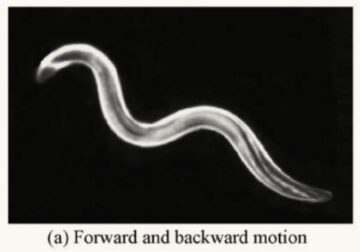 A near-perfect simulation of the human brain would have profound implications for humanity. It could offer a pathway for us to transcend the biological limitations that have constrained human potential, and enable unimaginable new forms of intelligence, creativity, and exploration. This represents the next phase in human evolution, freeing our cognition and memory from the limits of our organic structure.
A near-perfect simulation of the human brain would have profound implications for humanity. It could offer a pathway for us to transcend the biological limitations that have constrained human potential, and enable unimaginable new forms of intelligence, creativity, and exploration. This represents the next phase in human evolution, freeing our cognition and memory from the limits of our organic structure.